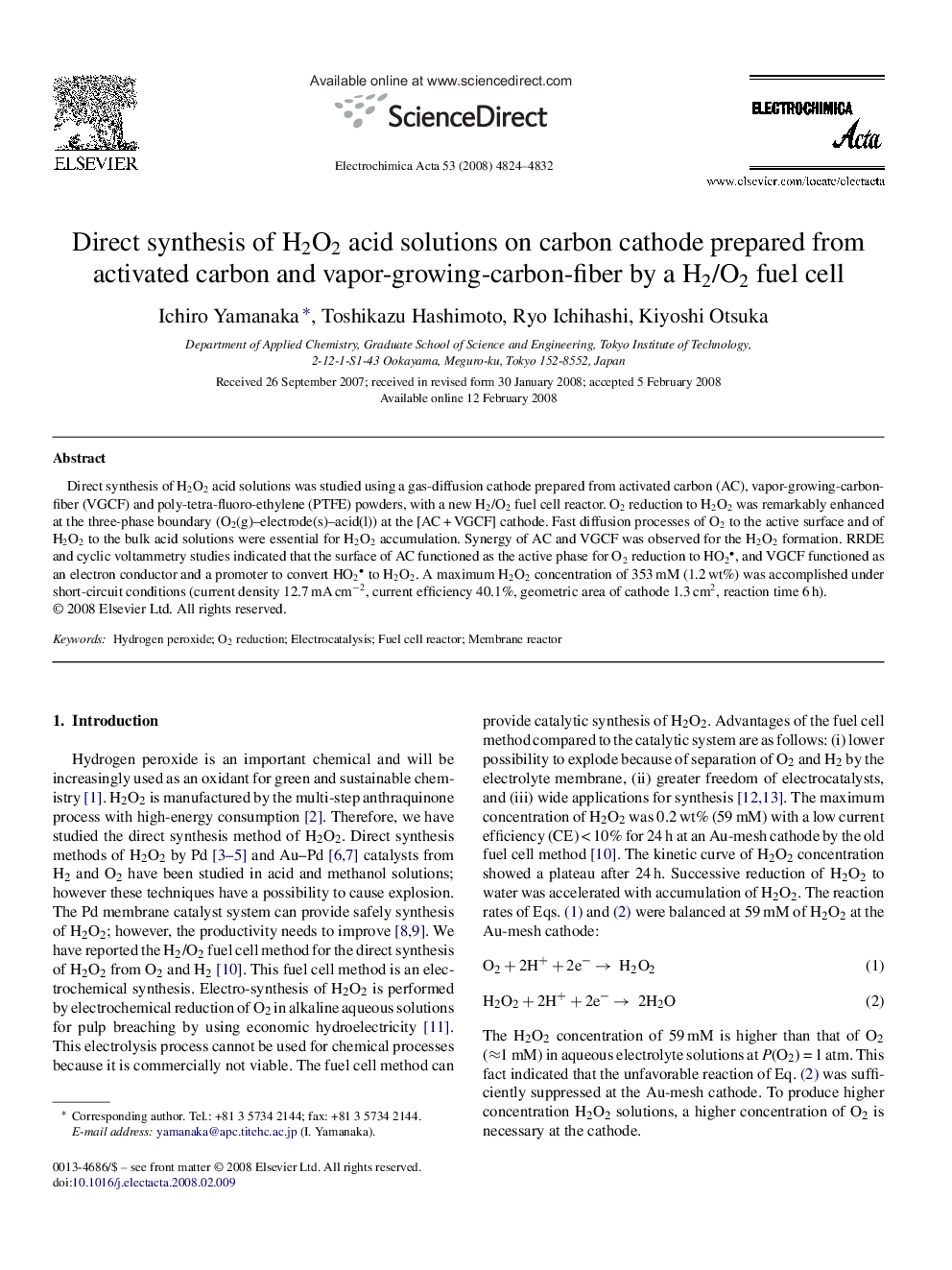| Article ID | Journal | Published Year | Pages | File Type |
|---|---|---|---|---|
| 192866 | Electrochimica Acta | 2008 | 9 Pages |
Direct synthesis of H2O2 acid solutions was studied using a gas-diffusion cathode prepared from activated carbon (AC), vapor-growing-carbon-fiber (VGCF) and poly-tetra-fluoro-ethylene (PTFE) powders, with a new H2/O2 fuel cell reactor. O2 reduction to H2O2 was remarkably enhanced at the three-phase boundary (O2(g)–electrode(s)–acid(l)) at the [AC + VGCF] cathode. Fast diffusion processes of O2 to the active surface and of H2O2 to the bulk acid solutions were essential for H2O2 accumulation. Synergy of AC and VGCF was observed for the H2O2 formation. RRDE and cyclic voltammetry studies indicated that the surface of AC functioned as the active phase for O2 reduction to HO2, and VGCF functioned as an electron conductor and a promoter to convert HO2 to H2O2. A maximum H2O2 concentration of 353 mM (1.2 wt%) was accomplished under short-circuit conditions (current density 12.7 mA cm−2, current efficiency 40.1%, geometric area of cathode 1.3 cm2, reaction time 6 h).
